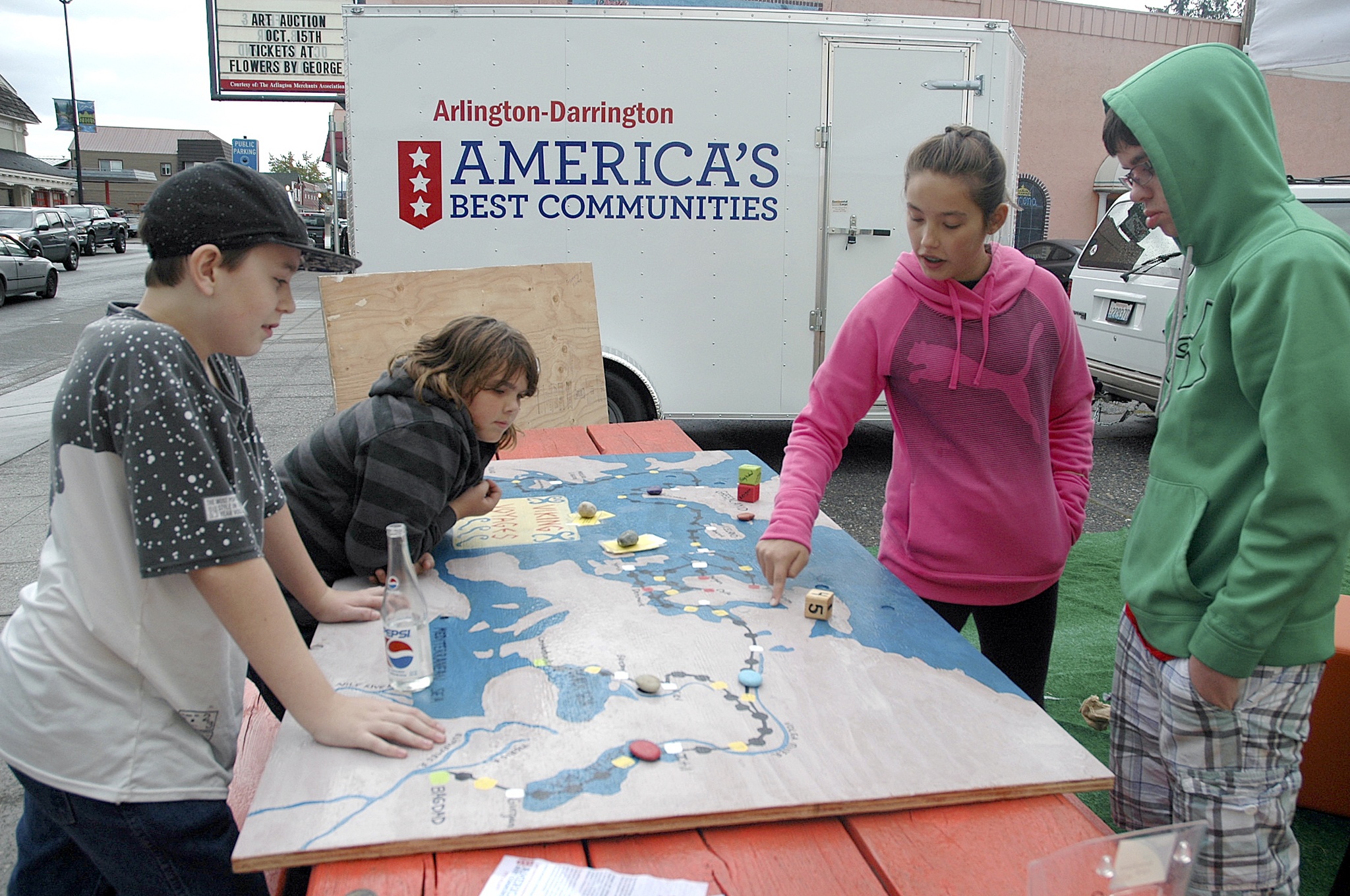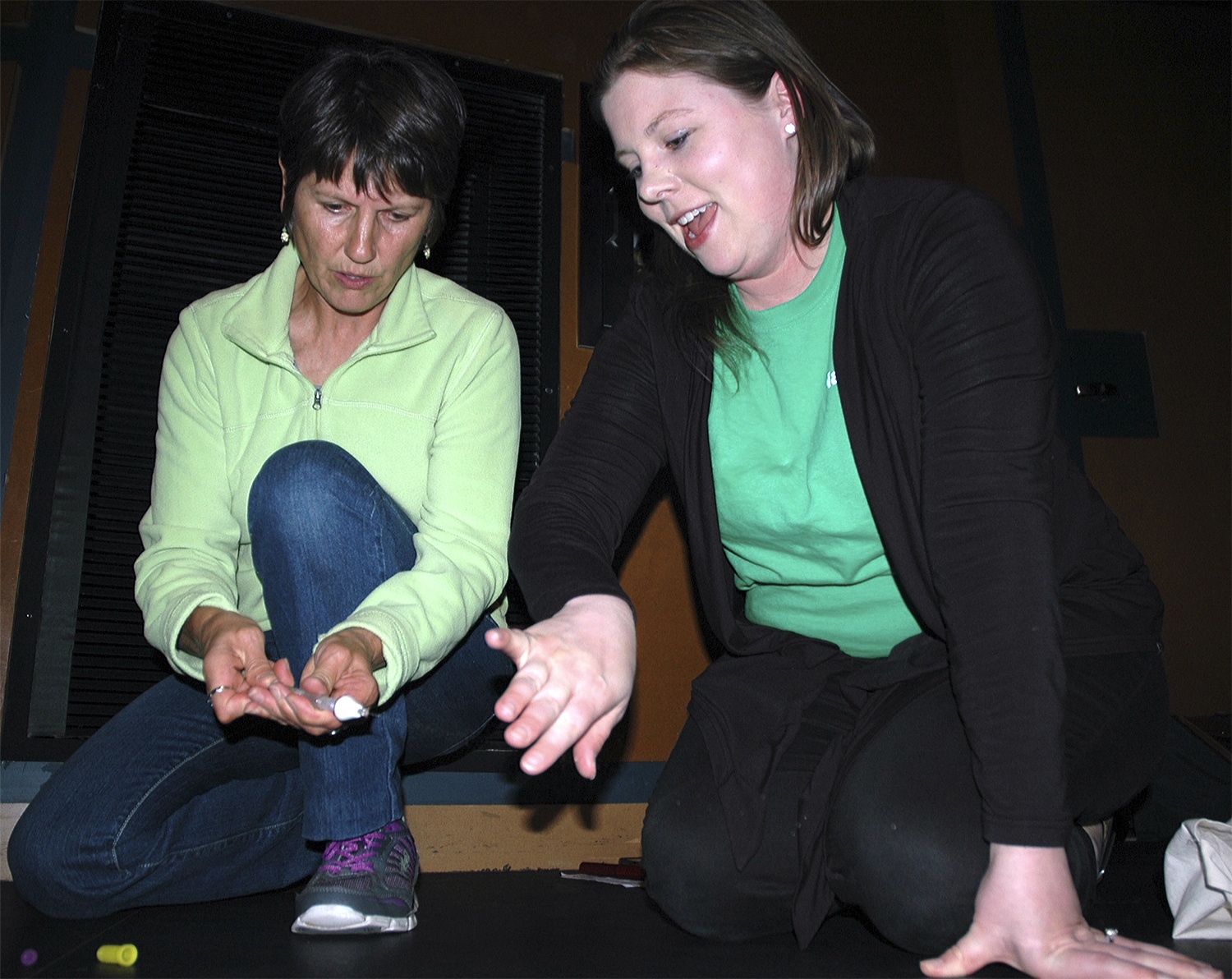OSO — The road is open and the debris is cleared, but the aftermath of the March 22 Highway 530 slide has stayed on Willy Harper’s mind.
“It feels like a long time and a short time both,” Harper said. “It’s like the blink of an eye that lasted 10 years.”
Six months after the mudslide that wiped out an entire neighborhood, claimed 43 lives and made the way between Arlington and Darrington virtually impassible, the Oso fire chief revisited the site Sept. 18 with Heather Kelly, Snohomish County’s long-term recovery lead for the slide.
Fields south of SR 530, that had been covered in debris, now are nearly bare, except for two towering poles that bear the U.S. flag.
“That reminds me of all the people who came out to help us,” Harper said. “United we stand.”
Harper credited the financial and moral support of government agencies and citizens with enabling search and recovery efforts to continue until the last victim was found.
“The thoroughness of the work impressed me,” Harper said. “It’s not back to the way it was before, but that’s a good thing, because it was a swamp here before. Now the debris is gone, so we’re not constantly reminded of the bad.”
Although Harper has lived in the area for three decades, the loss of the homes on Steelhead Drive impressed upon him how large his small community really is.
“Just within a one-mile stretch, how many families were living here, puts things into perspective,” Harper said. “You think you know everybody.”
Kelly emphasized that everyone who worked on the site treated it with respect, due to the fact that it had once been home to so many.
“Our contractor worked long and hard to bring the visible nightmare to an end,” Kelly said.
She elaborated that the county has put in an application to FEMA, requesting grant money to buy out the property owners who choose to sell.
“The grant would require that this all remain open space, with no commercial or residential buildings, to avoid any future risks,” Kelly said. “At the same time, it wouldn’t preclude a park, walkway or other temporary use, which is why we plan to work with the families who have been directly impacted, to see what their wishes are.”
While crews apply hydroseed to stabilize the hillside on the south side of SR 530, Kelly reported that the river channel just north of the highway has made progress.
“This whole area was just a lake from the flooding,” Kelly said, as she pointed to the berms constructed by the Army Corps of Engineers. “Before, it was green with trees, but the clay from the slide covered everything. Each week, though, we’re seeing more plant life. We’ve already seen salmon again. It’s nice to see nature doing its thing.”
While much of the northern slide field remains gray with clay soil, Harper and fellow Oso firefighter Joel Johnson agreed that it looks a lot better than when they tromped out into the immediate aftermath of the disaster.
“Imagine walking through soup,” Harper said. “You’d think you were standing on solid ground, until you took a step and sank up to your armpits. It was so sticky that you couldn’t even move your shovel through it.”
In spite of such daunting obstacles, as well as the increasing unlikelihood of finding survivors as their work went on, Harper insisted that all the responders remained committed to seeing the search and recovery work through to the end.
“We wanted to find everybody, no matter what it took,” Harper said.
The last slide victim was recovered and identified July 22. The removal of debris from the slide area wrapped up Sept. 12, nearly 10 days ahead of schedule.
Snohomish County Executive Director Gary Haakenson, who’s overseen the county’s long-term recovery team, credited dry summer weather and collaboration with community members throughout Stillaguamish Valley. Haakenson is retiring from 18 years of public service on Oct. 8, three years after coming to the county and one year after being appointed its executive director of public safety.
Since construction began June 30, crews removed and processed more than 200,000 cubic yards of material in the slide area, and recovered nearly 1,000 personal items, many of which were returned to family members.
The majority of the material stayed on site — roughly 85 percent was earthen material, with 10 percent woody debris — and has been smoothed and graded to improve stability and drainage, then hydroseeded.
For more information about the debris removal project, log onto www.snohomishcountywa.gov/2568/Debris-removal.







